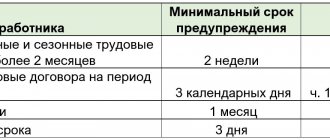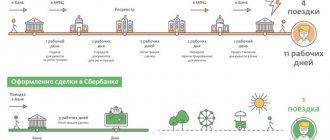Today, in commercial organizations, when working with counterparties, the use of electronic signatures (ES) is becoming increasingly widespread. The larger the organization, the more tangible the savings in time and money become due to the introduction of electronic document management (EDF).
At the legislative level, the issue of the possibility of using an electronic signature was resolved back in 2011, when Federal Law No. 63-FZ dated April 6, 2011 “On Electronic Signatures” was adopted. Article 6 of this law states that information in electronic form, signed with a qualified electronic signature, is recognized as an electronic document equivalent to a paper document signed with a handwritten signature, and can be used in any legal relationship in accordance with the legislation of the Russian Federation. The exception is cases where federal laws or regulations adopted in accordance with them establish a requirement for the need to draw up a document exclusively on paper.
Thus, by this norm, the legislator provided the opportunity to sign any electronic signature documents, and these documents are equivalent to paper ones.
However, this generally positive opportunity, which can be considered a serious step towards the digital enterprise, is also beginning to have a specific application feature.
This is due to the need to use additional technical means and the emergence of an electronic document flow operator - a new participant in relations between counterparties, which issues an electronic signature key and confirms its authenticity. A number of counterparties, taking advantage of the fact that the procedure for issuing an electronic signature is more complicated than affixing a handwritten one, began to abuse their rights and behave in bad faith in certain situations. In particular, when concluding transactions using digital signatures, cases of challenging them have become more frequent. As an illustration, let us consider court cases in which general trends can be traced.
Case No. 1
In case A40-26656/2015, according to the claim of ZAO against Dax LLC, a dispute arose as to whether the delivered goods were accepted by the buyer and whether the transaction signed by the electronic signature could be considered concluded. Having considered the evidence presented by the parties, the court recognized that the transaction was considered concluded and the goods delivered must be paid for. As evidence of the conclusion of the contract and receipt of the goods, the plaintiff provided:
- electronic consignment notes containing information about the signing of each submitted consignment note by the general directors of the plaintiff and the defendant;
- EDF operator report;
- Certificate of the Ministry of Telecom and Mass Communications of the Russian Federation on accreditation of the certification center N 08 dated June 29, 2012, confirming the compliance of the EDF operator with the requirements of the Federal Law “On Electronic Signatures”;
- license LSZ N 0005617 dated June 16, 2014 to carry out activities,
- certificate of the Federal Agency for Technical Regulation and Metrology of compliance of the Automated Information System SBiS with the Orders of the Ministry of Taxes of Russia, the Federal Tax Service of Russia;
- Regulations of the Certification Center;
- a public key certificate certified by the EDF operator containing the signatures of the representative.
How to check the authenticity of a signature?
If the contract is signed with the company's electronic signature, this confirms that it was the company that sent it.
No additional evidence is required. But the electronic signature itself needs to be verified. If it is invalid, the court may recognize the contract as not concluded. When you enter into an electronic contract, find out from the counterparty which certification center services it. Request that the counterparty provide a copy of the electronic signature verification key certificate. And then send a request to the certification center and find out whether it issued this certificate. Check whether the center's accreditation is valid on the day the certificate is issued. The certificate itself must also be valid at the time the document was signed.6 If the electronic signature is invalid, the court may decide that the company did not sign anything. In one case, the company demanded to recover payment for goods under a supply agreement from an individual entrepreneur. Three authorities rejected the claim. The courts indicated that there was no evidence of the conclusion of a supply agreement. The plaintiff in this dispute, in support of his arguments, brought flash drives with files that made up the electronic contract. The court rejected this evidence. One of the reasons is that electronic documents on behalf of the defendant were signed with an invalid electronic signature. The company did not provide an electronic signature key certificate, as well as evidence that it was included in the register.
Recently, the Supreme Court changed this approach - if the defendant denies entering into a contract, he must present specific evidence in his favor.
In this dispute, the supplier demanded to recover payment for the goods from the pharmacy. The claim was accompanied by copies of delivery notes that were signed with an electronic signature, a copy of a qualified signature verification key certificate for the defendant’s representative, and a copy of the power of attorney in his name. The defendant stated that there was no delivery, and three courts rejected the plaintiff's claim.
The Supreme Court sent the case for a new trial. He indicated that the electronic signature verification key certificate is valid until proven otherwise. The defendant should have presented evidence that refutes the authenticity of the power of attorney or certificate, but did not do so. He also did not claim falsification of evidence.
In such disputes, involve in the case the certification authority that issued the signature verification key certificate to the counterparty and can confirm this. Or two centers at once - the counterparty and your own.
Keep in mind that the certification center cannot confirm what kind of transaction the companies made. A40-1 It can only answer technical questions - for example, whether the signature is valid, when and what document the counterparty signed. If the certification authority cannot confirm the information, submit a request for computer forensics.
Case No. 2
In another remarkable court case, whole battles unfolded with proof of the fact of concluding a supply agreement using an electronic signature and the fact of delivery of the goods to the buyer.
We will talk about Case No. A40-4350/16 about the recovery of 38,011,312.65 rubles, which reached the Supreme Court of the Russian Federation. In the case, the court examined the following evidence:
- copies of delivery notes signed by the parties on paper, as well as with an electronic (digital) signature,
- a copy of the qualified electronic signature verification key certificate for the representative,
- a copy of the power of attorney for this representative of the buyer dated January 12, 2015,
- EDF operator report with summarized data on invoices for the disputed period.
The buyer's position in this case was to deny all the supplier's arguments and the evidence presented by him.
The plaintiff’s position was complicated by the fact that the contract stipulated a specific procedure for the exchange of electronic documents, which was not followed (a special notification about the use of EDF must be sent from one counterparty to another). This procedure provided the defendant with the opportunity to manipulate evidence, and he referred to the fact that the formal aspect of the contract was not observed. Meanwhile, as is known, the court evaluates the evidence in its entirety. After the Supreme Court of the Russian Federation canceled the lower judicial acts and sent the case for re-examination, the plaintiff’s demands were satisfied in full. However, to do this, it was necessary to go a long way to prove the supplier’s right to receive the remuneration due to him. Without knowing the economic background of this transaction, we can state that the mere fact of signing an electronic signature agreement provides the parties, under certain circumstances, with room to maneuver in court.
How to sign primary accounting documents online
— A primary accounting document is a document on the basis of which a business transaction (for example, the provision of services or the purchase of goods) is reflected in the accounting accounts. This type of document includes, for example, a waybill (Bill of Lading), a waybill (Bill of Lading), etc.
| Klim Stashevsky Partner Arzinger Law Offices | Anna Tsygankova Legal Assistant Arzinger Law Offices |
For HTP residents. Thanks to Decree No. 8, residents can:
- Sign primary accounting documents using signature analogues. This can be either an electronic digital signature or, for example, a graphical type of signature - a scan
- Draw up acts and invoices unilaterally
- Use a document issued by a foreign company in electronic form as a primary accounting document.
The minimum information that needs to be included in the document is the content, information about the persons who signed the document, and the date of the transaction.
At the same time, you can safely sign documents electronically using various Internet platforms, for example, DocuSign, WonderShare, etc. Foreign companies often ask for just such formats.
Photo from the website express-k.kz
For those who are not in HTP. Currently, non-residents can sign primary accounting documents only with their own hand or using an electronic digital signature.
In order to enjoy the same opportunities as HTP residents, it is necessary to make changes to Belarusian legislation.
Case No. 3
In one of the latest cases (N A40-174292/2018), the courts of three instances considered a dispute over non-payment in connection with the delivery of goods between LLC VOANDA (plaintiff) and JSC Trading House Perekrestok (defendant).
The arbitration court satisfied the claims for collection of debt for the goods supplied in the amount of RUB 1,502,772.48. in full. The appellate court, having accepted the defendant’s appeal and reconsidering the case according to the rules of the court of first instance, accepted a counterclaim for the collection of a fine for short delivery of goods in the amount of 540,998 rubles. 09 kop. As a result of the consideration of the case by the court of appeal, the decision of the first instance court was canceled, the claim of VOANDA LLC was denied, and the counterclaims of the defendant were satisfied. In its decision, the appellate court, guided by Articles 309, 310, 330, 454, 486, 488, 506, 516 of the Civil Code of the Russian Federation, proceeded from the fact that the UPD does not contain information that the goods were accepted by the defendant: in the column “ The goods (cargo) have been received”, there is no buyer’s signature.
Thus, the plaintiff in the initial claim did not prove that the goods were delivered to the defendant in accordance with the terms of the contract and on time, the demands for a fine for non-delivery of goods, stated in the counterclaim, are consistent with the terms of the contract and the actual circumstances of the case, the calculation of the fine verified, performed arithmetically and methodologically correctly.
Having disagreed with the judicial act of the arbitration court of appeal adopted in the case, VOANDA LLC filed a cassation appeal with the Arbitration Court of the Moscow District. Having considered the complaint, the court, in its ruling dated June 18, 2019 N F05-8350/2019, came to the conclusion that the lower courts incorrectly interpreted the terms of the contract and the law. As the court indicated, the mutual claims of the plaintiffs in the original claim and in the counterclaim are based on different orders from the buyer.
The conditions for recognition of a document signed with an enhanced qualified signature is the presence of a signed document with a key certificate issued by an accredited certification center. The requirements for such centers are established by Article 13
of Federal Law No. 63-FZ, and key verification is possible only with the use of cryptographic means of electronic signature (Article
12
of Federal Law No. 63-FZ).
The applicant of the cassation appeal indicates that clause 1.6.
of the contract, the parties came to an agreement to organize the electronic exchange of documents provided for in the contract through the e-commerce platform of the EDI provider. The plaintiff insists that UPD No. B-111 dated February 16, 2018 was sent in electronic form and signed with the buyer’s electronic signature, which confirms acceptance of the goods under the contract. At the same time, the appellate court in this case did not evaluate the delivery agreement concluded between the parties in terms of electronic exchange of documents (clause 1.6 of the agreement), did not establish the existence of grounds for qualifying an electronic signature as invalid, and did not evaluate the powers of the person who signed the UTD electronic signature.
Thus, conclusions about the failure to confirm the fact of delivery based on the UPD were made due to the incorrect application of substantive law, in the absence of interpretation of the terms of the contract, and are premature.
As a result of consideration of the cassation appeal, the case was sent for re-examination to the court of appeal.
As we see from judicial practice, the very fact of using an electronic signature becomes an additional basis for the parties to challenge the transaction and requires a special approach when resolving such cases.
How to sign an agreement electronically
Russian legislation provides for the right to use digital signatures for concluding contracts. The main requirement is correct registration, taking into account legal and technical requirements. We have prepared material on how to correctly sign an agreement with an electronic signature.
Legal basis for signing an agreement with an electronic signature
In the Russian Federation, the legal basis for this type of contract is the norms of the Civil and Labor Code:
- The Civil Code of the Russian Federation guarantees the right to sign an agreement with an electronic signature if we are talking about concluding an agreement between different counterparties who are engaged in economic activities. The conclusion of an agreement occurs through the transfer of electronic documents.
- The Labor Code of the Russian Federation guarantees the right to sign an agreement with a remote worker using an electronic form.
In order for the concluded agreement to be recognized as legally correct, it is necessary to confirm the described decision with an enhanced digital signature (electronic signature). The legislator does not stipulate whether a qualified signature is required or not.
If the reader would like to receive additional information on how a contract is signed digitally, please refer to Federal Law No. 63 of April 6, 2011.
Legal force of concluded agreements
The above-mentioned Federal Law number 63 states that the legal force of an agreement is given by the use of an electronic digital signature. It is she who confirms the authenticity of the agreement that the parties signed. If you decide to sign an electronic agreement with an electronic signature, from the point of view of current legislation, it is no different from a formally recognized legal agreement where paper is used.
Other rules that must be followed in order for an electronic contract to be recognized as genuine:
- The form must comply with the requirements of Russian legislation. However, if we are not talking about a formalized agreement, it is drawn up in free form. Sign such an agreement, it will still be valid due to the signature.
- The content must also not contradict the current legislation of the Russian Federation.
- The requirements for a signature are that it belongs to a person who has full authority to sign the agreement in terms of current legislation.
Signing an agreement where an electronic certificate is used has other features. You need to look at the type of contract before signing it and verifying it with an electronic digital signature. Documents can be formalized or informal; they differ in their drafting rules.
What are formal agreements
The signing of formalized documents will comply with current legislation only if they comply with the established form. Among such documents are reporting, employment contracts, etc. If you sign an agreement and certify it with a digital signature, it will have legal force if the following conditions are met:
- Compliance with the format. Sign the agreement only if the format does not contradict the requirements of Russian legislation.
- They are concluded with the full consent of the parties, while the regulations established for signing are observed.
- An electronic certificate in the form of a qualified digital signature is used.
Both parties have a valid certificate at the time of conclusion of the agreement. If you do not currently have a valid digital signature, you can contact an accredited certification center for help.
What are informal documents
Most often, this is a simple document for which there is no uniform format established by government agencies. Any party can issue a power of attorney, write a letter, or propose a business agreement. The form can be any. The second party looks at the content of the proposed agreement, and for legal force it is used:
- Qualified type digital signature. An additional benefit of this certificate is the guarantee of document immutability. A digital signature indicates that if the agreement has been signed, its content will not change.
- Digital CEP of unqualified type.
If the signing of the agreement is carried out within the framework of the current electronic document flow, a preliminary signing of the agreement on the recognition of validity in legal form for these types of certificates is required. Before signing, make sure that the document contains a description of the requirements for the type of signature, and that all the necessary details of the document are present.
Documents to be signed digitally
For assistance regarding whether or not you can sign agreements digitally, please review the information provided below. A legal document, which is concluded using cryptographic protection, is formally equal to the same document that is written on paper and on which one must put a regular seal, as well as write a surname and initials. But there is a type of document that can only be concluded in traditional paper form. Unfortunately, no amount of help in the form of stronger cryptographic security will change this fact.
The same Federal Law number 63 stipulates cases when it is necessary to use only a paper form of the information carrier. But there are also opposite cases.
For example, the document type “Contract based on the results of an electronic auction” is not executed in paper form. It is necessary to convert it into electronic form.
Both types of media are only suitable for use unless the law specifically states otherwise.
Where is digital signature used to sign an agreement?
Contracts certified by CEP are concluded on the following platforms:
- Electronic platforms. An agreement can be concluded with representatives of the state or private companies.
- Commercial organizations. Usually they develop a web interface for the user. It is convenient to draw up an agreement if there is a CEP.
- Specialized information systems.
As a rule, a sample agreement can be found on any of these services. In order to be able to legally enter into transactions, you must have a recognized EPC, which can be obtained from one of the certification centers.
It is best to contact the Astral-M training center, which has long been known on the market and offers a quality product for a reasonable price. To purchase an electronic signature, fill out the feedback form and our specialist will contact you.
What you need to consider to avoid falling into the trap when using ES
- Despite the fact that the use of electronic signatures when preparing documents with counterparties makes the exchange of documents more transparent, faster and more convenient, this means of drawing up contracts and primary documents imposes additional requirements that must be taken into account by market participants.
- In agreements with counterparties, it is necessary to clearly and thoroughly specify the rules for the exchange of electronic documents. Do not indicate special procedures that may not be completed in a hurry to meet the volume of business indicators, delivery plans or work execution (for example, as in the contested agreement in Case No. 2 , discussed by us above, where the agreement provided for a special procedure for the transition to EDI).
- When executing the contract, monitor the correct execution of accompanying documents, including UPD, so that the signed document has the required mark. (As we remember, in Case No. 3 , the court initially rejected the claim only because the plaintiff did not prove the fact of delivery of the goods, due to the lack of information).
- Make sure that the person signing the electronic document on behalf of the counterparty has the authority to sign it. Request a power of attorney for this person and verify credentials. (In Case No. 2, part of the arguments of the defense (the defendant) was based precisely on the lack of evidence of the authority of the person who signed the UTD to sign and accept the goods).
- If a controversial situation arises with counterparties, do not rush to file a claim in court, but first carry out high-quality preparation for the case. Request a report and a key certificate from the EDF operator, obtain all the necessary confirmation of the authenticity of the electronic signature, check the terms of the agreement with the actual behavior of the participants in the process and, in case of inconsistencies, protect yourself in advance by providing the necessary documents that have evidentiary force in court.
In conclusion, we would like to add that each dispute is individual and it is not possible to provide comprehensive recommendations that would be suitable for all cases. Therefore, most of the difficulties that counterparties may encounter can be resolved only with careful and high-quality elaboration of contracts that contain a condition on the use of EDI in the process of exchanging documents.
Contract by email: is it possible?
The Civil Code allows for the conclusion of an agreement by exchanging documents via electronic communication, which makes it possible to reliably establish that the document comes from a party to the agreement.
This follows from Article 434 of the Civil Code. The main distinguishing feature of such an agreement from a regular one is:
- method of conclusion - by exchanging electronic data via the Internet;
- and the form of the contract.
A transaction in writing must be concluded by drawing up a document expressing its contents and signed by the person or persons entering into the transaction, or authorized persons (Article 160 of the Civil Code).
In this case, the requirement for a signature is considered fulfilled if any method is used that allows one to reliably identify the person who expressed the will.
The parties in their agreement may also provide for a special way to reliably determine the person who expressed the will to conclude a transaction.
Therefore, in order to recognize an agreement as concluded through an exchange by e-mail, it is necessary to establish the fact that correspondence was conducted by a person who is the legal representative of the relevant party.
That is, that the correspondence was conducted by a person authorized to conclude an agreement. This was indicated by the Moscow Arbitration Court in its ruling dated 02/09/2021 in case No. A40-155322/20-159-1148).
At the same time, the possibility of using an electronic signature when concluding civil transactions is allowed only if there is a mutual agreement of the parties (resolution of the Moscow District Arbitration Court dated June 13, 2017 in case No. A40-78415/16).
Therefore, a contractor who insists on performing work and demanding payment for it must submit such an agreement to the court. The courts qualify its absence as one of the confirmations of the absence of contractual relations (resolution of the Ninth Arbitration Court of Appeal dated May 25, 2018 No. 09AP-19014/2018-GK).
Previously on the topic:
Which primary will be changed and approved in a new way?
EDI – paper document is not an obstacle
Final decision
Now it's time to evaluate the second parts of the applications. At this stage, the customer sees for the first time which organizations or individuals are hidden behind the auction numbers. The second parts of the applications contain all information about the supplier required in accordance with Law 44-FZ. Now, within 3 days, the customer evaluates applications and makes a final decision. If the second part of the bid of the participant who offered the best price corresponds to the auction documentation, then the contract is concluded with him. Otherwise, the next participant on the list who offers the best price is declared the winner.
The customer has three days to make a final decision. The auction winner will receive an electronic contract through the Unified Information System, which will have to be signed in the prescribed manner.
The process of participating in electronic trading has many nuances. But the main thing that a novice participant in public procurement must not forget about is that after winning an electronic auction, it is impossible to refuse to conclude a contract, as well as to make significant changes to its terms. Otherwise, by decision of the FAS, the winner of the auction will be included in the register of unscrupulous suppliers. Therefore, it is extremely important to study the procurement documentation and the draft government contract before submitting an application.
Electronic auction and its features
In the Russian public procurement system, concluding an electronic contract is possible only through the electronic auction procedure. This is a method of identifying a supplier that involves bidding among all eligible bidders, with each subsequent bid being made at a lower price. The auction notice is posted in the Unified Information System, and the procedure itself is carried out on electronic trading platforms (ETP).
The main feature of the auction is the presence of an additional link - ETP. Before participating in government procurement, the supplier must register and obtain accreditation at one of six sites. To do this, you will need an electronic unqualified signature, which can be obtained from one of the many special certification centers.
Registration in the ERUZ UIS
From January 1 2020 , in order to participate in bidding under 44-FZ, 223-FZ and 615-PP, registration in the ERUZ register (Unified Register of Procurement Participants) on the EIS (Unified Information System) portal in the field of procurement zakupki.gov is .ru.We provide a service for registration in the ERUZ in the EIS:
Order registration in the EIS






